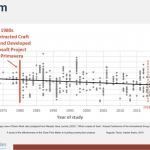By Dr. Anthony Kenneson-Adams FInstLM, Head of Learning & Knowledge Transfer at Project7 Consultancy(UK) Ltd
Identifying Areas for Business Improvement
Today we present the 2nd installment of an 8-step process to enable you on your journey to Operational Excellence. We trust you will put these steps into action and power-up your journey to Operational Excellence.
Identify areas for improvement: Once you have a clear understanding of your objectives, you need to take time to identify the areas of your business that need improvement that will drive out waste in time, effort, and materials. This can involve analysing your current processes and systems to identify inefficiencies or areas for optimization.
Here are some practical ideas to help you identify areas of your business for improvement.
I. Review Process Documentation: Start by reviewing the existing documentation related to the manufacturing or build process, such as standard operating procedures (SOPs), work instructions, and process flowcharts. Analyse the documentation to identify any potential bottlenecks, inefficiencies, or areas where improvements can be made.
II. Conduct Process Mapping: Create a process map or flowchart that illustrates the entire manufacturing process from start to finish. This visual representation will help you identify all the steps involved, dependencies, and potential areas for improvement. Also align how the process actually works with how you want it to work to ensure the process is as efficient as it possibly can be as in Value Steam Mapping.
III. Analyse Key Performance Indicators (KPIs): Examine the relevant KPIs for the manufacturing process, such as production output, cycle time, downtime, quality metrics, and scrap or waste rates. Compare the actual performance against the desired targets or industry benchmarks to identify any significant gaps or areas of underperformance.
IV. Engage with Employees: Involve the employees who work directly with the manufacturing process. Conduct interviews, focus groups, or surveys to gather their insights and perspectives on potential areas for improvement. Often it is your people who have valuable on-the-ground knowledge that provide the most valuable suggestions.
V. Perform Root Cause Analysis: If you identify specific problems or bottlenecks in the manufacturing process, conduct a root cause analysis to determine the underlying causes. Use techniques like the “5 Whys” to dig deeper and understand the fundamental reasons behind the issues. Importantly ensure you are working to solve the real problem and not just the symptom to the problem.
VI. Utilize Lean Manufacturing Principles: Apply Lean Manufacturing principles and tools such as value stream mapping, 5S methodology, and Kaizen events. These methodologies can help you identify waste, eliminate non-value-added activities, and continuously improve the process.
VII. Implement Process Monitoring and Control: Establish robust monitoring and control mechanisms to track the performance of the manufacturing or building process in real-time. Use sensors, automation, and data analytics to collect relevant data and identify patterns or anomalies that can highlight areas for improvement.
VIII. Benchmark and Industry Research: Conduct research to identify best practices and benchmarks within your industry. Compare your manufacturing process to those of similar organizations to identify areas where you may be lagging behind or where you have the potential to excel.
IX. Seek Continuous Feedback: Encourage continuous feedback from stakeholders, including customers, suppliers, and internal teams. They may provide insights on areas for improvement, such as quality issues, delivery delays, or communication gaps.
x. Prioritize and Plan Improvements: Finally, prioritize the identified areas for improvement based on their potential impact and feasibility, i.e., which will best improve safety, quality, cost, delivery, and people. Develop a detailed action plan outlining specific improvement initiatives, here it is essential to assign responsibilities, set timelines, and track progress regularly.
Remember that continuous improvement is an ongoing process, and it requires commitment and collaboration from all levels of the organization. Regularly reassess and adjust your improvement efforts based on feedback and changing circumstances.
If you missed the first installment of this blog series you can read it here. We will be back next week with post #3.










